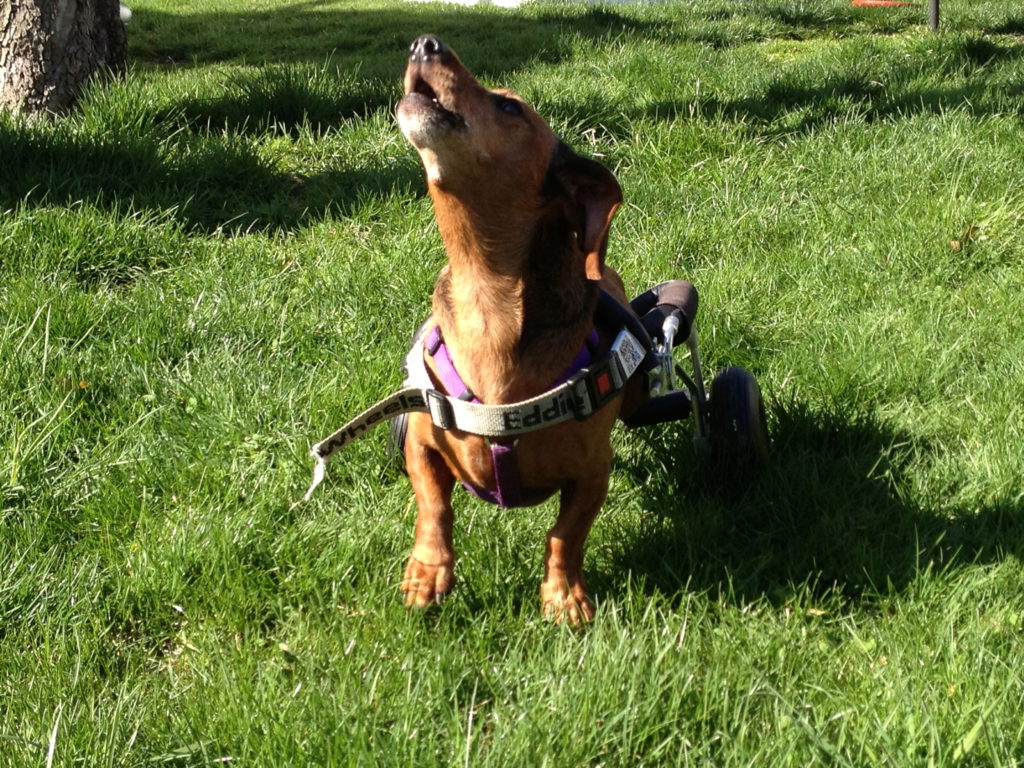Dogs may not be able to communicate like humans–but like us–they can change their tones and meaning easily. Dogs have many barks that convey different attitudes. Unlike people, dog’s barks are unique to their species because each bark has a universal meaning.

If you have a dog or are wondering what your furry friends want to say, decode your dog’s bark:
Playful Bark —
One of the most happy sounds a dog makes, a playful bark sounds like a stutter or “ha-ruff”. You’ll hear this sound from your dog when they wish to initiate play n. Often, this bark is accompanied by a rapid tail wag.
Sound: Stutter or “Ha-ruff”
Pitch: Mid-range

Playful Bark
Call to Action Bark —
When dogs bark continuously and rapidly, it is a call to action to their owners or other dogs. You’ll often hear this bark if someone new comes into the dog’s territory or the dog suspects danger. They’re telling you to be on alert.
Sound: Constant and repetitive
Pitch: Mid-range

Call to Action Bark
Warning Bark —
A warning bark is similar to the Call to Action bark. This noise tells you your canine is suspicious or suspects there may be a problem or intrusion. In dog language, this means that they either want their owner or the alpha dog of the pack to check out the issue.
Sound: Multiple barks with pauses
Pitch: Mid-range

Warning Bark
Greeting Bark —
One of the most common and joyful barks to hear, a dog greets you with quick and short barks to say hello when you walk through the door.
Sound: One or two sharp, short barks
Pitch: Mid-range

Greeting Bark
Annoyed Bark —
If dogs are annoyed with other animals or their owners, they will snap at them with a lower bark that means “Stop!” When you hear this sound, try to respect your dog’s wishes!
Sound:
Pitch: Low to Mid-range

Annoyed Bark
Questioning Bark —
When a dog is curious or questioning about an item or event, you’ll hear a startled or surprised sound. When the sound is repeated once or twice, the dog is telling the owner to come look or alert their pack.
Sound: A sharp, single bark
Pitch: High to Mid-range

Questioning Bark
Pained Bark —
Although a very obvious sign your dog is upset or suffering, owners will hear a series of yelps that indicate the dog is experiencing pain or fear.
Sound: Numerous yelps
Pitch: Mid-range

Pained Bark
Lonely Bark —
A lonely bark can be very sad and disheartening to hear. This type of bark can have elements of many tones, but this cry is a call for companionship.
Sometimes the lonely bark is accompanied by whines.
Sound: Constant with medium or long pauses
Pitch: Mid-range

Lonely Bark
Fun Bark —
A fun bark indicates that your dog is having fun. Characterized by a somewhat high yelp, this short yelp lets owners know dogs are enjoying their time together.
Sound: One or two sharp, short barks
Pitch: Mid-range

Fun Bark
Yelp Bark —
Ever accidentally step on your dog’s tail? Then you may be familiar with this high-pitched noise. A yelp is very short and notifies you if your dog experiences a sudden or unexpected pain!
Sound: Short, one-note
Pitch: High-pitch

Yelp Bark
Once you start recognizing these barks, you can more easily communicate with your dog. Taking the time to address each noise can help you monitor their feelings and lead to a more safe and gentle relationship with them.






